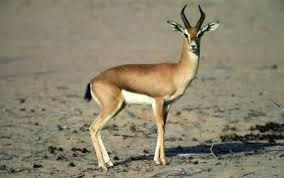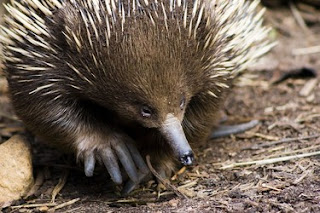True Wild Life | 7 Extinct Animals | From panthers and pandas to rhinos and tigers, dwindling animal numbers speak of the need to step up conservation efforts – if it’s not already too late. As a kind of wake-up call, we decided to take a look at seven extinct megafauna species captured on camera. With modern photography having only been invented in the 1820s, these snapshots are visible testament to just how recently the creatures shown were wiped out – and a jarring reminder of the precarious situation for many species still left on the planet.
1. The Tarpan
The last Tarpan died on a Ukrainian game preserve at Askania Nova in 1876. A prehistoric type of wild horse that once roamed from Southern France and Spain eastwards to central Russia, the Tarpan died out in the wild in the late 1800s. Reasons for its extinction include the destruction of its forest and steppe habitat to make room for people; hunting by farmers averse to their crops being eaten and mares stolen; and absorption into a growing domestic horse population. There have been various attempts to recreate the Tarpan through re-breeding, resulting in horses that do at least resemble their extinct forebears.
2. The Quagga
Another extinct equine beast – this time a subspecies of zebra – the last wild Quagga was probably shot in the late 1870s, while the last specimen in captivity died in 1883 at Artis Magistra Zoo in Amsterdam. Once abundant in southern Africa, the Quagga fell victim to ruthless hunting for its meat and hide, and because it was seen by settlers as a competitor to livestock like sheep. It was the coat of the Quagga that distinguished it best, with only the front part of its body showing the zebra’s vivid striped markings. As with the Tarpan, projects to breed back the Quagga have produced favourable results, visually at least.
3. The Javan Tiger
The Javan Tiger was a subspecies of tiger found only on the Indonesian island of Java, until it died out as recently as the 1980s. In the early 19th century, the Javan Tiger was common all over the island, but rapid human population increase led to the destruction of its forest habitat. The Javan Tiger was also mercilessly hunted, so that by the 1950s it is thought fewer than 25 remained in the wild. Following in the tracks of the Bali Tiger, which was wiped out in the 1930s, the fate of the Javan Tiger speaks for the precarious position of the tiger species as a whole. Sightings of the subspecies persist but hopes for its survival are fading.
4. The Caspian Tiger
Another tiger to vanish in the last century was the Caspian Tiger, the last confirmed reports of which date back to before the 1950s. Recent research suggests the Caspian Tiger was largely identical to the Siberian Tiger, but even if not a distinct subspecies, it yet had its own range and habitat. Found in the sparse forest and river basin corridors of Central and Western Asian, this big cat succumbed to intense hunting by the Russian army, who were told to exterminate it during a huge land reclamation programme in the early 1900s. Farmers followed, clearing forestland, and the loss of the Caspian Tiger's primary prey, the boar, spelled its demise.
5. The Syrian Wild Ass
The last member of this species died at Schönbrunn Zoo, Vienna in 1928. Formerly occupying the mountains, deserts and steppes between Palestine and Iraq, the Syrian Wild Ass disappeared from the Syrian desert during the 18th century, not helped by war between Palestine and Syria. It was eradicated in Northern Arabia during the 19th century, and then became most seriously threatened with World War I, when its remaining habitat was overrun with fighting forces. The rest is history. This smallest of all recent members of the horse family stood just over 3 feet high at the shoulder and was generally light in colour.
6. The Bubal Hartebeest
The Bubal Hartebeest was a species of antelope that became extinct in 1923, when a captive female died in Jardin des Plantes in Paris. It was once found over much of North Africa, at least as far east as Egypt, where it was a mythological and sacrificial beast. However, by the 1900s its range was limited to Algeria and the Moroccan High Atlas mountains. Hunting throughout the 19th century drastically reduced the Bubal Hartebeest’s numbers, sealing its fate. A fawn-coloured animal that stood almost 4 feet at the shoulder, the Bubal Hartebeest was characterised by lyre-shaped horns that almost touched at the base. A beautiful beast, sadly missed.
7. The Thylacine
It was 1936 when the last Thylacine took its final breath in Hobart Zoo, Tasmania. Or so we think. Extremely rare if not extinct on the Australian mainland by the time of European colonisation, the Thylacine survived on the island of Tasmania alongside close cousins like the Tasmanian Devil. There, this distinctive, large-jawed beast found itself with a price on its head, as settlers blamed it for attacks on their sheep. The Thylacine was hunted to extinction by bounty hunters and farmers, though other factors such as disease, the introduction of wild dogs, and human encroachment into its habitat may have also played a part in the tragedy.
Although commonly known as the Tasmanian Tiger or Tasmanian Wolf, the Thylacine was neither feline nor canine: while striped like a tiger and sharing various features with large dogs, this marsupial carnivore was wholly unrelated – and with the pouch to prove it. A favourite in cryptozoological circles, there have been numerous sightings of the Thylacine since 1936 – which continue to this day – though none have yet been confirmed. It will be a rare coup for Mother Nature if another Thylacine is ever discovered; otherwise its most vivid memory will sadly survive in little more than photographic form – another dead hero of the natural world.
































































